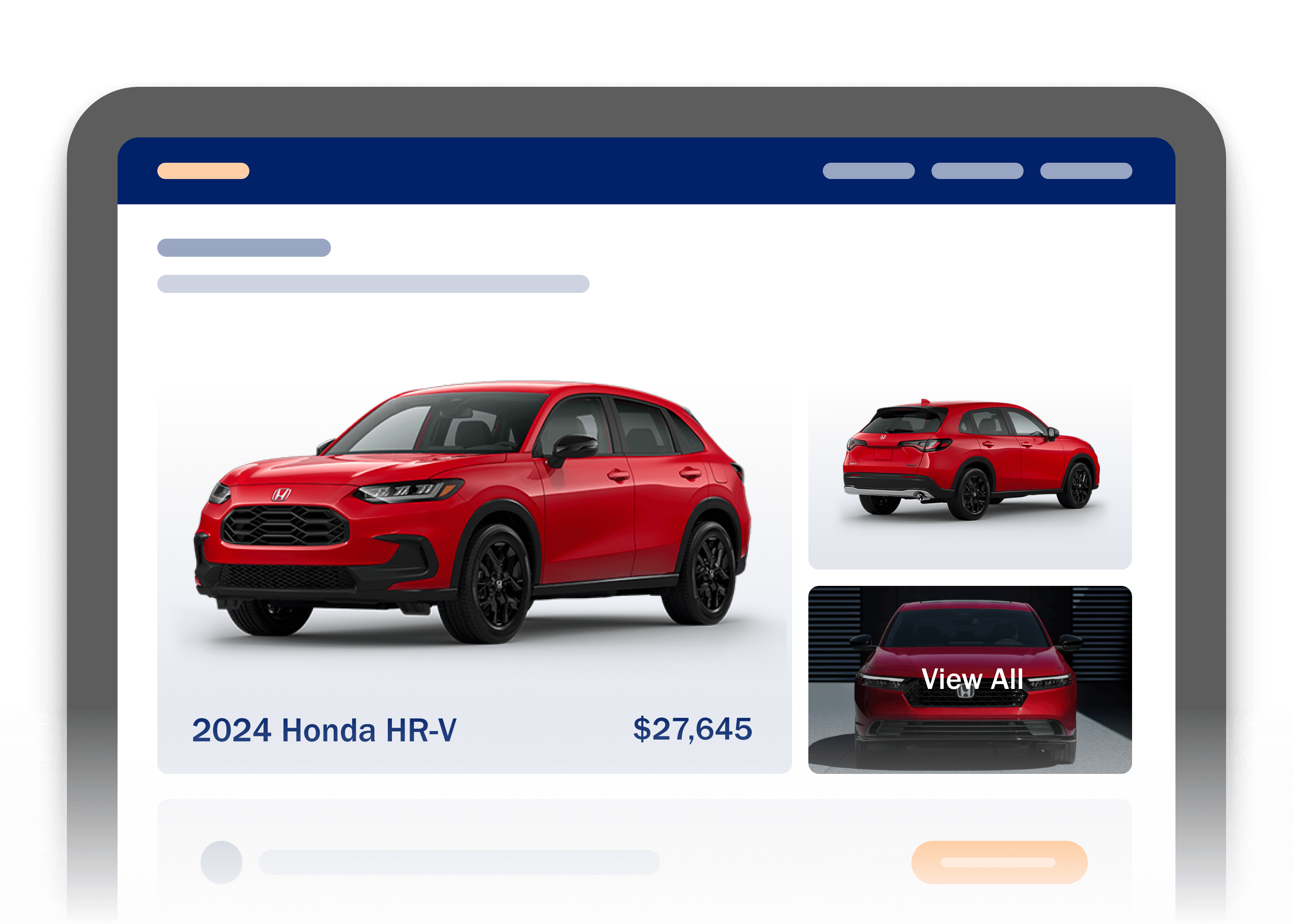
The electric vehicle surge has been steadily rising. Over one million EVs were sold in 2023, a monumental achievement for EVs in the automotive industry. Fast forward to January 2024, and now there are more than 3.2 million EVs in the U.S. 1 More OEMs are entering the market and different models are being made available to consumers, which means pricing is getting more competitive and more people can afford them.
While EV sales have hit record highs, the growth rate seems to be decreasing. To keep up with the changing demands of the industry, the annual Cox Automotive Path to EV Adoption study allows dealers and OEMs to stay informed about the state of EVs.
This study reveals that an increase in supply and more available models have outpaced consumer demand. EV consideration among car shoppers has begun to wane and inventory is sitting on dealership lots longer.
So, what’s on the horizon for the EV market? Here are our top takeaways.
- Shoppers Are Skeptical About Making the EV switch…for Now
An EV Skeptic is defined as a car shopper who is only considering vehicles powered by traditional internal combustion engines (ICE). According to the 2024 Path to EV Adoption Study by Cox Automotive, nearly half of vehicle shoppers in the market today are Skeptics. These shoppers are hesitant about the idea of switching to an electric vehicle.
Why aren’t most car buyers ready to take the leap into the electric vehicle segment? There are multiple barriers to adoption that dealers and OEMs will need to overcome to move Skeptics into a consideration and purchase mindset:
- Driving Range and Lack of Infrastructure: Consumers worry about the range of electric vehicles (EVs) and the availability of charging stations, especially if these issues impact their travel plans.
- Battery Fears: Concerns about battery capacity and charging time deter some buyers.
- Affordability: While EV purchase prices are decreasing, consumers still perceive ownership costs as higher than comparable ICEs and hybrids.
OPPORTUNITY: Incorporate More EV Content
EV buyers actively seek information online, consuming more content than their (ICE) counterparts.3 Since the concept of EVs is still new to some shoppers, they rely heavily on content, especially videos, when researching online. Expert reviews and ratings, vehicle awards, and more help consumers better understand the new world of electric vehicles.
Your EV content should highlight the different types of EV vehicles manufactures are making. With different models entering the market, shoppers need to identify key differentiators with different makes and models. EV considerers also tend to be technology driven. Focusing on tech enhancements and features in your vehicle descriptions is a critical way to move shoppers closer to purchase.
Call out the key benefits of electric (EV) versus internal combustion (ICE) vehicles as well. As EV shopper demographics are skewing younger, lower income and multicultural, helping these audiences understand the benefits of EV will move them closer to their purchase.
Additionally, 74% of new EV buyers took action after viewing an online auto video ad compared to 65% of new ICE buyers.4 Incorporating more video advertising can encourage EV shoppers to browse more website pages, submit a lead or even visit your dealership for a test drive.
- EV Shopper Demographics Becoming More Mainstream
One finding in the study reveals that the EV market is slowly becoming more mainstream. While current EV ownership is heavily tilted toward luxury and high-earning households, the study shows the EV market is casting a wider net, attracting Gen Z, multicultural, and less-affluent shoppers.
OPPORTUNITY: Expand Your Advertising and Marketing Reach
With a more diverse set of consumers considering EVs, dealers must adjust some of their advertising budget and strategy to include these new sets of shoppers. Use data to your advantage and work with your digital marketing partner to ensure your EV advertising is getting in front of more consumers that are interested in EVs.
The market is also seeing a notable uptick in used EV consideration. In 2021, 62% of EV Considerers were looking at used EVs. Today, 77% are considering used electric vehicles.
While Tesla remains the most considered EV manufacturer, several mainstream brands are gaining traction. The new report highlights that electric vehicles from Toyota, Hyundai, and Kia have seen significant increases in awareness and consideration since 2021. However, Ford continues to be the most-considered non-Tesla EV brand. The study also reveals that most shoppers are unaware of EV options from other major automakers, indicating a lack of research into EV products. For instance, only 33% of consumers in the market are aware of Nissan’s EV offerings, despite the brand being an early pioneer in U.S. EV sales.
OPPORTUNITY: Provide More Education Around EVs
In addition to increasing your advertising reach, consider incorporating educational content about non-Tesla EVs. If it’s one thing the study reveals, perception seems to be a high deterrent for some EV skeptics. Getting ahead of the curve and providing education on not only what manufacturers sell EVs, but the different models and varying price ranges can help with awareness. This awareness could attract shoppers who are more likely to buy from a manufacturer they are loyal to if they knew they sold EVs. It can also ease apprehension as consumers see more manufacturers believe EV adoption is the way forward and will steadily increase over the next few years.
EV consideration will notably increase with 54% of current Skeptics saying that 3-5 years from now will be the right time to purchase an EV. By 2033, 90% of vehicle shoppers will be considering an electric vehicle.2 This shift will be driven by continued advances in technology, more EV charging infrastructure and consumer education. More models and price reductions will cast a wider net attracting Gen Z, multicultural and less-affluent shoppers.
- Increasing Dealer Confidence to Sell EVs
The new EV study highlights the importance of dealers and OEMs fostering a balanced, more strategic relationship to accelerate EV adoption.
Since 2019, dealerships have benefited from their OEM partners with enhanced support in marketing, sales, and service. However, dealers indicate a need for more resources beyond EV sales training, including increased EV incentives, free maintenance programs, and additional advertising funds. Additionally, 65% of dealers report feeling increased pressure from automakers to meet EV sales targets, a significant rise from 39% in 2019, with luxury dealers experiencing the most pressure.
OPPORTUNITY: Ensure Support from OEM Partners
Getting support is crucial as dealers enter this new space of selling EVs. 67% of franchise dealers prefer that OEMs share in the responsibilities for upper funnel activities, while they take charge of the lower funnel steps.2 As a dealer, ensure you are reaching out to your OEMs to help educate consumers on their line-up, on the key differences and benefits of EV vs. ICE, as well as provide information on EVs listed for sale.
Being proactive about the specific support you need—whether more advertising, sales incentives, lead generation—is important so OEMs know how to assist. The shift to EVs is imminent and as the industry addresses barriers to EV adoption, your dealership does not want to be left behind.
What Else Can I Do as a Dealer?
Entice EV shoppers and skeptics with key offers. Offering free charging and maintenance could encourage both EV Considerers and Skeptics to make a purchase. Providing incentives such as a complimentary at-home charger, a free maintenance or service plan, and free charging at public stations would likely boost EV sales. According to survey respondents, an ideal trial period includes six months of free maintenance and free charging.2
Prepare for the EV Surge
Automotive shoppers are gradually embracing electric vehicles. While maybe not as quickly as dealers and OEMs would like, there’s an opportunity to accelerate this transition. It is important to understand and address why Skeptics and Considerers are not ready to switch and fill the gaps by incorporating more EV content, expanding your advertising and marketing reach, and collaborating with your OEMs for more specific support.
For more insights from the Cox Automotive Path to EV Adoption study, CLICK HERE.
Sources:
- S&P, Data through January 2024
- Cox Automotive Path to EV Adoption, 2024
- 2023 Cox Automotive Car Buyer Journey
- Cox Automotive GfK Content Influence Study, 2023


